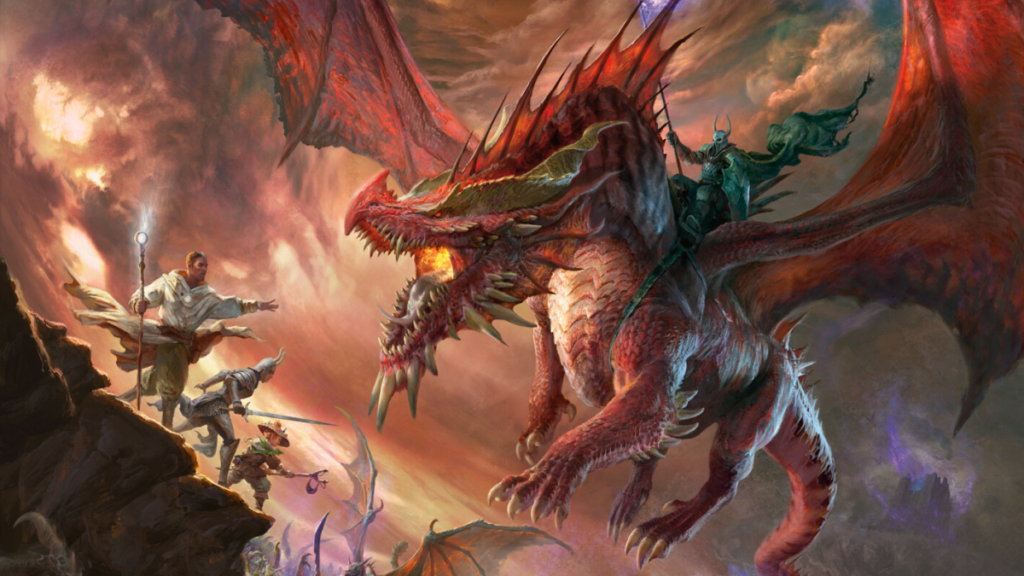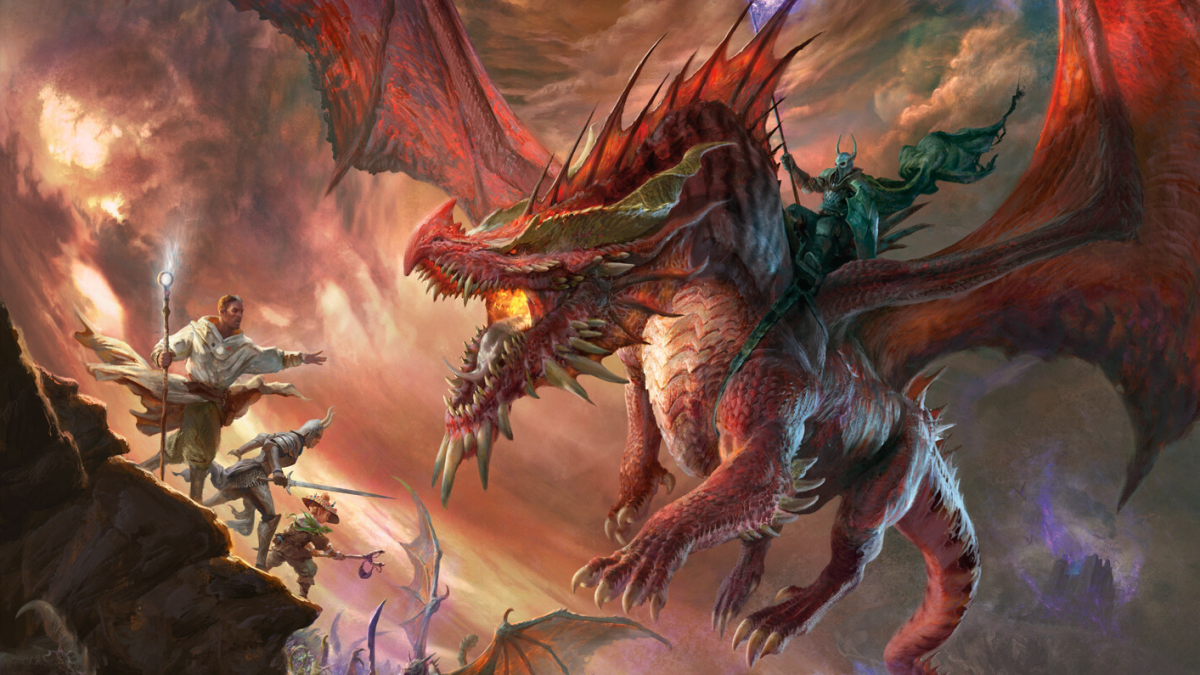
Unveiling the Raven Queen: Death, Fate, and Mystery in Dungeons and Dragons
The Raven Queen, a prominent figure in the pantheon of Dungeons and Dragons deities, embodies death, fate, and the transition of souls. Unlike many gods of death who revel in decay or dominion, the Raven Queen maintains a somber watch over the natural cycle of life and death, ensuring that the boundaries between the living and the dead remain intact. This article delves into the lore, history, and significance of the Raven Queen within the Dungeons and Dragons universe, exploring her role, her followers, and her impact on campaigns.
The Origins of the Raven Queen
The Raven Queen’s origins are shrouded in mystery, with various accounts circulating among scholars and clerics. One common theory suggests that she was once a mortal woman who achieved godhood through an act of immense power or sacrifice. This theory often ties her to the ancient elven civilizations, hinting at a connection to the Feywild or the Shadowfell. Some tales whisper that she was a powerful sorceress who sought to understand the mysteries of death, while others claim she was a queen who made a pact with otherworldly forces to protect her people from annihilation. Regardless of her mortal identity, her ascension transformed her into a being of immense power, forever bound to the realm of death and the passage of souls.
Another prevalent theory posits that the Raven Queen was once a goddess of fate or destiny, whose portfolio was usurped by another deity, perhaps Vecna or Orcus, forcing her to flee to the Shadowfell. This event fundamentally altered her nature, transforming her into the somber guardian of death we know today. The loss of her original domain imbued her with a deep-seated aversion to undeath and any attempt to circumvent the natural order.
The Raven Queen’s Domain and Portfolio
The Raven Queen’s domain is primarily centered around death, fate, and memory. She is the protector of the natural transition from life to death, ensuring that souls pass on to their final destination without being corrupted or trapped. She despises undeath, viewing it as an abomination that defiles the natural cycle. Her portfolio extends to winter, as the season of death and dormancy, and to memory, as she holds the memories of all who have passed on.
As the goddess of fate, the Raven Queen is believed to weave the threads of destiny, guiding mortals along their predetermined paths. However, she does not interfere directly in mortal affairs, preferring to observe and maintain the balance. She intervenes only when the natural order is threatened, or when a soul is in danger of being unjustly claimed.
The Shadowfell and Letherna
The Raven Queen resides in the Shadowfell, a plane of existence characterized by perpetual twilight and echoing memories. Within the Shadowfell, she rules from her fortress, Letherna, a majestic citadel of obsidian and bone. Letherna serves as both a palace and a sanctuary for the souls awaiting their final judgment. The fortress is guarded by spectral ravens and loyal servants, ensuring that no unauthorized entity can enter or disrupt the Raven Queen’s work.
The Shadowfell itself reflects the Raven Queen’s somber nature, a land of fading colors and echoing whispers. It is a place of reflection and introspection, where souls confront their past lives and prepare for their final destination. The Raven Queen’s presence permeates the Shadowfell, influencing its very landscape and atmosphere. The Raven Queen’s connection to the Shadowfell makes her a powerful entity within this plane, capable of manipulating its environment and influencing its inhabitants.
Worship and Followers of the Raven Queen
The Raven Queen’s followers are diverse, ranging from solemn clerics and grave wardens to pragmatic adventurers and grieving relatives. They share a common respect for death and a commitment to upholding the natural order. Her clerics often serve as guardians of cemeteries and protectors of the deceased, ensuring that the dead are treated with dignity and respect. They also hunt down undead creatures and those who practice necromancy, viewing them as threats to the Raven Queen’s domain.
Many adventurers also venerate the Raven Queen, seeking her guidance in matters of fate and destiny. They believe that by honoring her, they can gain insight into their own paths and avoid the pitfalls of premature death. Some adventurers even dedicate themselves to the Raven Queen’s service, undertaking quests to eliminate undead threats and protect the balance between life and death.
Ordinary people often turn to the Raven Queen in times of grief and loss, seeking solace and comfort in her unwavering presence. They pray to her for guidance and strength, hoping to find peace in the face of death. Many families honor the Raven Queen by performing rituals and ceremonies to ensure the safe passage of their loved ones’ souls.
The Raven Queen in D&D Campaigns
The Raven Queen can play a significant role in Dungeons and Dragons campaigns, serving as a patron, an antagonist, or a source of mystery and intrigue. As a patron, she can task adventurers with quests to eliminate undead threats, recover stolen artifacts, or protect sacred sites. Her motivations are often aligned with maintaining the balance between life and death, making her a valuable ally in the fight against evil forces.
As an antagonist, the Raven Queen can present a more complex challenge. Perhaps she suspects the party of tampering with the natural order, or perhaps she seeks to test their worthiness through a series of trials. Her motivations may not always be clear, forcing the party to make difficult choices and question their own beliefs. The Raven Queen’s ambiguous nature can add depth and complexity to any campaign, forcing players to confront moral dilemmas and grapple with the consequences of their actions.
Even as a background element, the Raven Queen can add a layer of intrigue to a campaign setting. Her influence can be felt in the presence of spectral ravens, the prevalence of funerary rituals, and the somber atmosphere of certain locations. Players may encounter her followers, uncover ancient secrets related to her origins, or stumble upon forgotten shrines dedicated to her worship. The Raven Queen’s presence can enrich the world and provide opportunities for exploration and discovery.
The Raven Queen’s Symbols and Iconography
The Raven Queen is typically represented by a raven’s feather, a mask of bone, or a pale, sorrowful face. Ravens themselves are often seen as her messengers and symbols of her power. Her colors are black, white, and gray, reflecting the somber nature of death and the transition of souls. Her iconography often includes images of winter landscapes, barren trees, and spectral figures.
Clerics of the Raven Queen often wear black robes adorned with raven feathers or bone ornaments. They carry symbols of their faith, such as miniature masks or raven talismans. They may also wear face paint or tattoos to honor the Raven Queen and signify their devotion. These symbols serve as a constant reminder of their commitment to upholding the natural order and protecting the balance between life and death.
Notable Artifacts and Relics
Several artifacts and relics are associated with the Raven Queen, each imbued with her power and influence. The Mask of the Raven Queen is a legendary artifact that grants its wearer the ability to communicate with the dead and perceive the threads of fate. The Feather of the Shadowfell is a powerful talisman that allows its wielder to travel between the Material Plane and the Shadowfell. The Scepter of Letherna is a symbol of the Raven Queen’s authority, capable of controlling the flow of souls and banishing undead creatures.
These artifacts are often sought after by adventurers, scholars, and necromancers alike, each seeking to harness their power for their own purposes. However, wielding these artifacts comes with a price, as they are closely tied to the Raven Queen’s will and can exert a powerful influence over their users. Those who seek to exploit these artifacts risk incurring the Raven Queen’s wrath and facing the consequences of their actions.
The Raven Queen and Other Deities
The Raven Queen’s relationship with other deities is complex and often fraught with tension. She maintains a wary neutrality with most gods, focusing primarily on her own domain and avoiding direct conflicts. However, she is fiercely opposed to deities of undeath, such as Vecna and Orcus, viewing them as abominations that defile the natural order. She also has a strained relationship with deities of fate, as her own portfolio was once associated with destiny before her transformation. The Raven Queen’s stance against undeath aligns her with deities of life and light, but her somber nature and focus on death often create a distance between them.
Her interactions with deities of the natural world are equally complex. While she respects the cycle of life and death, her association with the Shadowfell and her aversion to resurrection often put her at odds with deities of healing and growth. The Raven Queen’s unique perspective on death sets her apart from many other deities, making her a powerful and enigmatic figure in the pantheon.
The Future of the Raven Queen
The Raven Queen’s future in Dungeons and Dragons remains uncertain, as her story continues to evolve with each new edition and campaign setting. Her enigmatic nature and complex motivations make her a compelling character for both players and dungeon masters alike. Whether she continues to serve as a somber guardian of death or undergoes further transformations, the Raven Queen will undoubtedly remain a prominent figure in the Dungeons and Dragons universe for years to come. Her influence on the game’s lore and her impact on countless campaigns ensure her place as one of the most memorable and enduring deities in the pantheon. The Raven Queen’s legacy continues to inspire and challenge players to consider the deeper meanings of life, death, and the choices that shape our destinies. [See also: Exploring the Shadowfell in Dungeons and Dragons] [See also: Vecna: Archlich and God of Secrets] [See also: Understanding the Different Planes of Existence in D&D]

